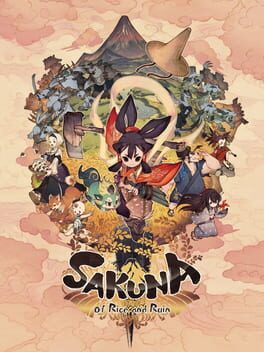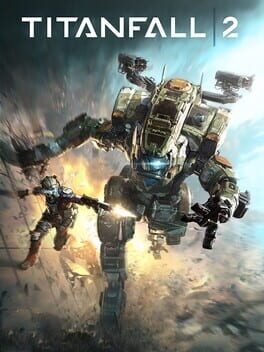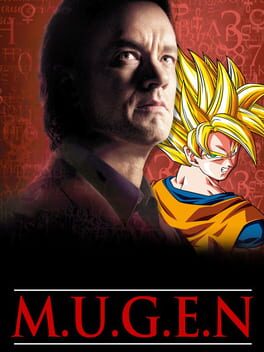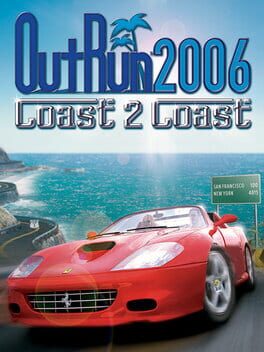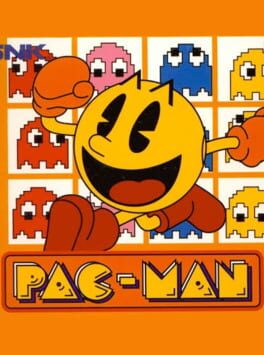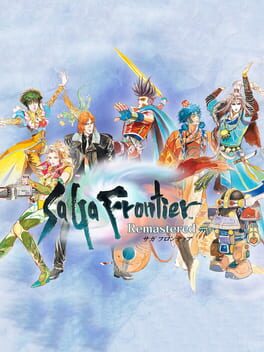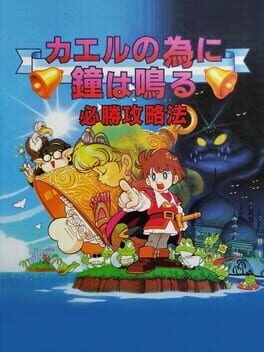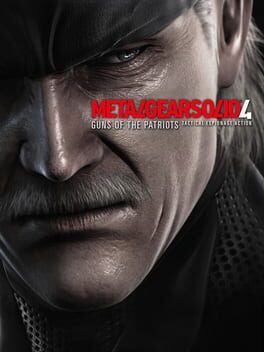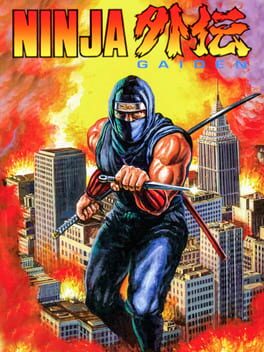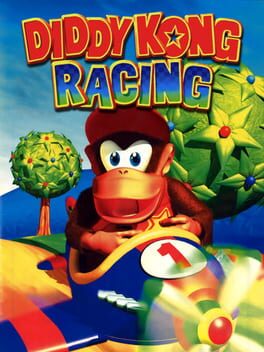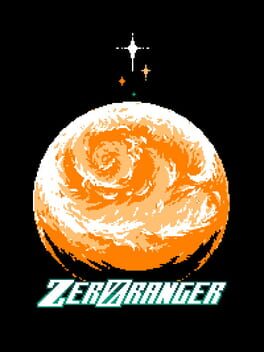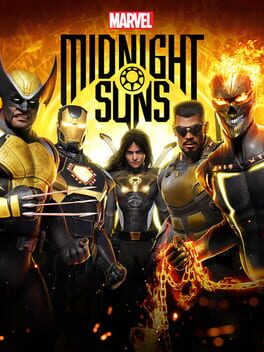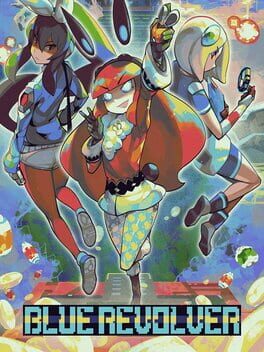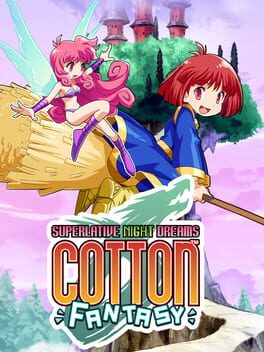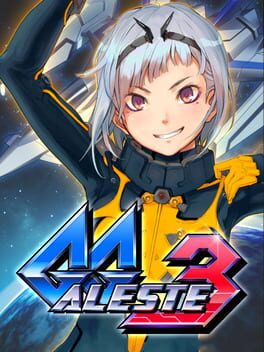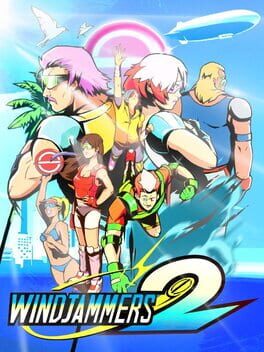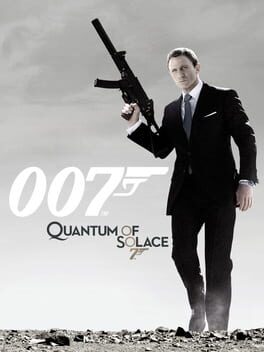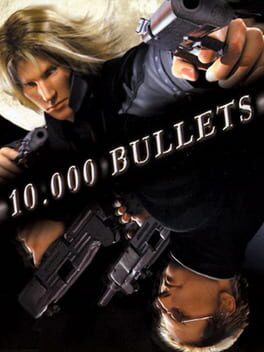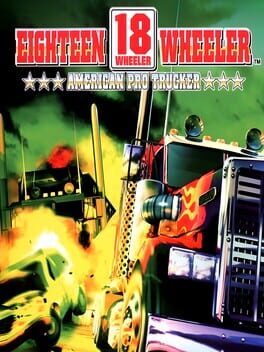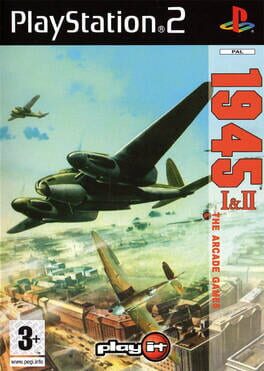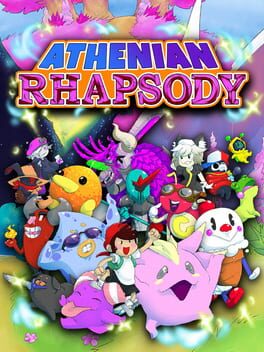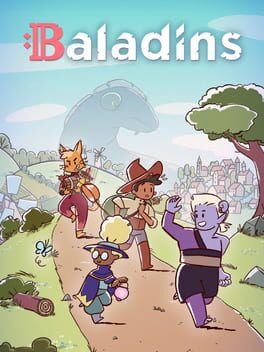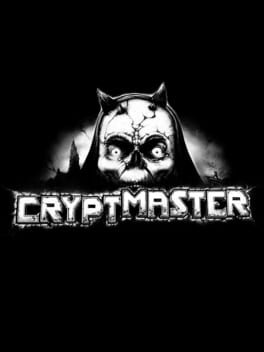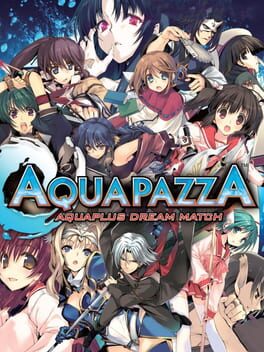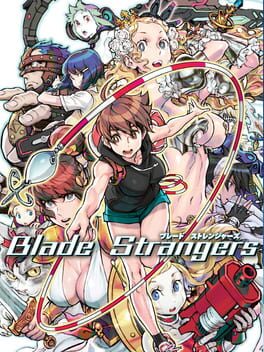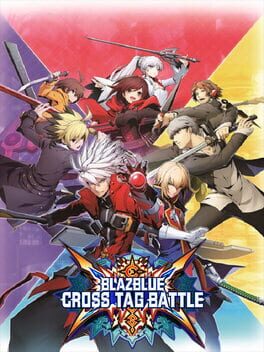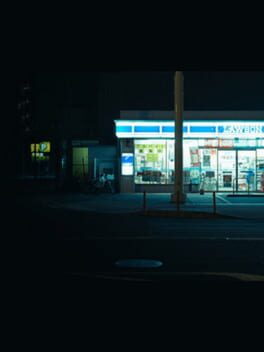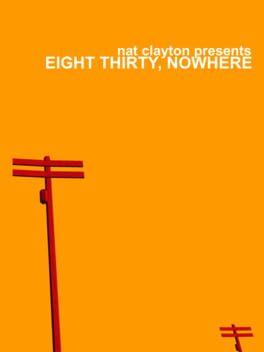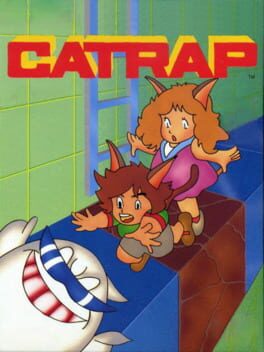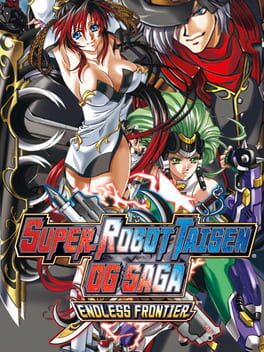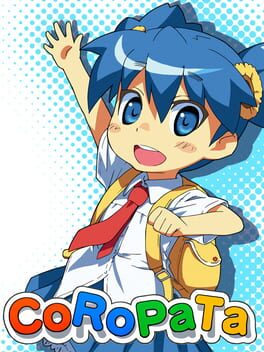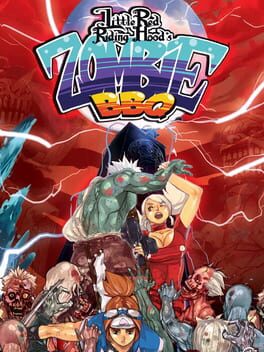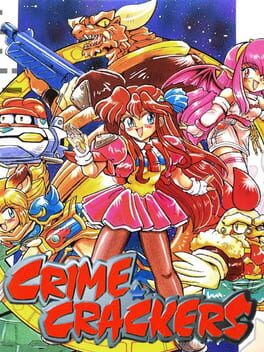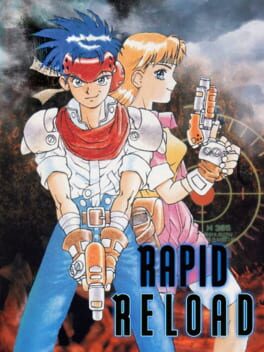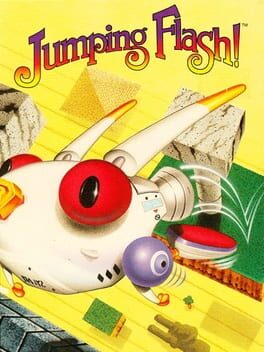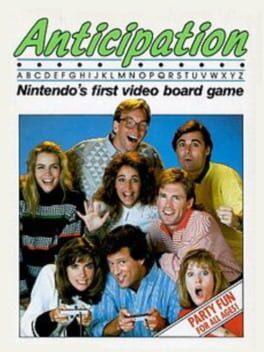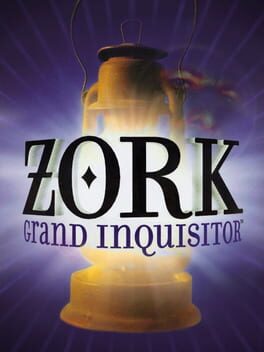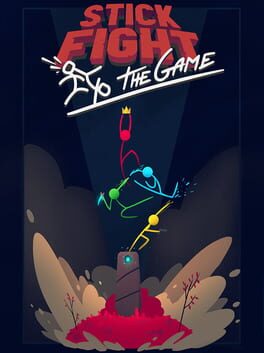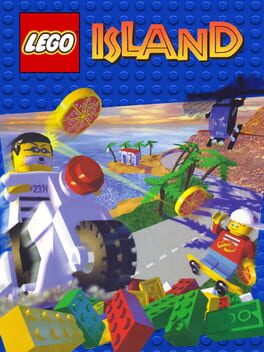cappatlas
24 reviews liked by cappatlas
Unlike most spiritually empty silent-protagonist "cozy" farming sims, this game actually has something to say. True divinity is found in quotidian self-improvement, by developing the discipline needed to rise to each morning's challenges, and sharing the fruits of your labor with those around you. Sakuna's growth of character comes from her newfound need to participate in cultural exchange, her days no longer defined by self-serving hedonism but by what she and her islandmates literally and figuratively bring to the table. Incredible what this subgenre can achieve when it's concerned with more than just "let me make a lot of money and ply my favorite handful of pixels with gifts until they fall in love with me."
Combat has some problems - the game's shaggy progression structure often leads to you being not strong enough or (more typically) too strong for any given section, and I found myself frustrated at Sakuna's inability to turn on a dime. The crunchiness of the crashing system and flying around in tight little triangles with the raiment are still quite satisfying.
Plus: DUCKS!!!
Combat has some problems - the game's shaggy progression structure often leads to you being not strong enough or (more typically) too strong for any given section, and I found myself frustrated at Sakuna's inability to turn on a dime. The crunchiness of the crashing system and flying around in tight little triangles with the raiment are still quite satisfying.
Plus: DUCKS!!!
Aconcagua
2000
Ably emulates the experience of watching a mid-budget action blockbuster, which is mostly a compliment short of the nagging feeling that this had very little reason to be a video game. Shuffling between your characters for brief snippets of conversation is fun, especially as you start to get a bead on their personalities, but the extreme linearity and simple puzzles keep this from feeling like an effective example of the medium. A small portion plated very handsomely.
An extra half-star for the inexplicable placement of a pixelated Sliding Doors poster in the middle of a South American military base (original to prove I'm not insane), which surprised and delighted this gay weeb cinephile of a certain age. Eat yer heart out, Kojima.
An extra half-star for the inexplicable placement of a pixelated Sliding Doors poster in the middle of a South American military base (original to prove I'm not insane), which surprised and delighted this gay weeb cinephile of a certain age. Eat yer heart out, Kojima.
Titanfall 2
2016
In life, we rarely get a chance to follow an art from its genesis to its conclusion. At the arse-end of history, we're often doomed to look at such things retrospectively - surrealism, rock & roll, postmodernism, the New York School of Poets, wild west movies, whatever - and wonder what it was like to evolve and ultimately ascend to atrophia in tandem with a creative movement.
Titanfall 2 is, therefore, a rare privilege. A game that has, with the retrospective power of its seven-year existence, definitively marked the end of an era that was carved out by Call of Duty thirteen years prior. Halo, Modern Warfare, Bioshock, Borderlands, Wolfenstein, the lot - I feel like it's fair to say that Titanfall 2 encompasses its own movement, the nature of its existence, and all the reasons it could not continue - where do you go beyond time? If you'll forgive the incredibly fucking pretentious analogy, Titanfall 2 is not unlike Let It Be, the final Beatles album that put the cap on a half-century of rock. (You could probably extrapolate this complete nonsense further and suggest that the corporate self-awareness of popstars popping up in Warzone and Fortnite mirrors the ironic MTV garage grunge of Kurt Cobain, but hey! - that would probably sustain an equally stupid Backloggd essay of its own.)
What makes Titanfall 2 rarer still is that it’s an ending to a now-lost artform that began with the same creator years prior. Infinity Ward may have respawned, but they were, at this conclusive point in time, the same unit of creation from 2003. Impressionism was started by guys like Claude Monet, but was drawn (painted?) to a close by Van Gogh, a conscious will that passed down a century, their art thankfully/tragically unaccelerated by lack of commercial interest. They say an artwork is never finished, but fortunately for us the future is far more financial than we originally projected - artistic movements can now be efficiently condensed into a decade of fiscal quarters. We can watch an artform rise and fall upon the plateau in the time it takes to finish a high school diploma, and that's neither a good thing nor a bad thing; just a thing that happens now. Let it be.
Sure, other militaristic first-person dual-weapon wall-running action shooters with automatic health recovery have come after Titanfall 2, but they're essentially invalid imitations, impressionist postcards that we pick up in the lobby of the Van Gogh Museum. They're the consequences of something that's gone for good. Never to return, for better and for worse.
Titanfall 2 is, therefore, a rare privilege. A game that has, with the retrospective power of its seven-year existence, definitively marked the end of an era that was carved out by Call of Duty thirteen years prior. Halo, Modern Warfare, Bioshock, Borderlands, Wolfenstein, the lot - I feel like it's fair to say that Titanfall 2 encompasses its own movement, the nature of its existence, and all the reasons it could not continue - where do you go beyond time? If you'll forgive the incredibly fucking pretentious analogy, Titanfall 2 is not unlike Let It Be, the final Beatles album that put the cap on a half-century of rock. (You could probably extrapolate this complete nonsense further and suggest that the corporate self-awareness of popstars popping up in Warzone and Fortnite mirrors the ironic MTV garage grunge of Kurt Cobain, but hey! - that would probably sustain an equally stupid Backloggd essay of its own.)
What makes Titanfall 2 rarer still is that it’s an ending to a now-lost artform that began with the same creator years prior. Infinity Ward may have respawned, but they were, at this conclusive point in time, the same unit of creation from 2003. Impressionism was started by guys like Claude Monet, but was drawn (painted?) to a close by Van Gogh, a conscious will that passed down a century, their art thankfully/tragically unaccelerated by lack of commercial interest. They say an artwork is never finished, but fortunately for us the future is far more financial than we originally projected - artistic movements can now be efficiently condensed into a decade of fiscal quarters. We can watch an artform rise and fall upon the plateau in the time it takes to finish a high school diploma, and that's neither a good thing nor a bad thing; just a thing that happens now. Let it be.
Sure, other militaristic first-person dual-weapon wall-running action shooters with automatic health recovery have come after Titanfall 2, but they're essentially invalid imitations, impressionist postcards that we pick up in the lobby of the Van Gogh Museum. They're the consequences of something that's gone for good. Never to return, for better and for worse.
M.U.G.E.N
1999
I found this game in elementary school and this and halo were my first experience with modding and game dev
I made a fighting game in middle school using this engine using photos of my school friends and wrote a report about it for an english class. I adore this game and I'm happy it still has a community
I made a fighting game in middle school using this engine using photos of my school friends and wrote a report about it for an english class. I adore this game and I'm happy it still has a community
"How far are you gonna take me?"
A palate-cleanser after a week of driving a Testarossa and an F50 around the technically impressive but virtually soulless Forza Horizon 5. After Microsoft forced me against my will to play a mission called "#SQUADGOALS", I knew I needed to play a driving game with real romance in its heart.
I'm sure one of the best reviews on this whole site was of this game, and it said something to the effect of "OutRun 2 understands that making your girlfriend happy is the ultimate game", but I can't find it because it's super-hard to sift through Backloggd data. So let me re-iterate that statement and say that more video games should implement mechanics centred around satisfying the whims of a romantic companion. Funny that it's a driving game that best understands romance as a chain of dangerous manoeuvres through risk and reward to keep a ticking timer alive.
The Quick Play mode dropping you in as a white-sheet Ferrari that's hopelessly, perpetually chasing the ghosts of the iconic OutRun F50 feels like the developers saying that they could never hope to catch the original game, but god damn did they come close. A testament to how well-built this thing is under the hood that it feels endlessly replayable without even going into the submenus to find mission modes, time trials or unlocks. Just glad that my long-past self unlocked all the songs, because all I wanna do is handbrake and swing tail to this beat all night: https://www.youtube.com/watch?v=ypiaPp3xMPo
A genuine artistic crime that a video game masterpiece like this is trapped in a prison made of licensing - surely Sega and Ferrari can work things out? Sega are rich now! They make movies! Ferrari's big red cars come off better here than they do in Forza, but I guess it would pain a modern-day corporation to admit their products might be inhabited by living souls - the girlfriend in OutRun 2 has more personality in her little 2-polygon pinky than all 132GB of what Horizon 5 is offering us.
You've got a heart, right? Go on, try this game out - you can set up PPSSPP, download the .bin file and complete a race to the finish in the time it takes your PC to download the first gig of Forza! Men with guts play OutRun 2006: Coast 2 Coast!
NEXT STAGE: GIANT STATUES
A palate-cleanser after a week of driving a Testarossa and an F50 around the technically impressive but virtually soulless Forza Horizon 5. After Microsoft forced me against my will to play a mission called "#SQUADGOALS", I knew I needed to play a driving game with real romance in its heart.
I'm sure one of the best reviews on this whole site was of this game, and it said something to the effect of "OutRun 2 understands that making your girlfriend happy is the ultimate game", but I can't find it because it's super-hard to sift through Backloggd data. So let me re-iterate that statement and say that more video games should implement mechanics centred around satisfying the whims of a romantic companion. Funny that it's a driving game that best understands romance as a chain of dangerous manoeuvres through risk and reward to keep a ticking timer alive.
The Quick Play mode dropping you in as a white-sheet Ferrari that's hopelessly, perpetually chasing the ghosts of the iconic OutRun F50 feels like the developers saying that they could never hope to catch the original game, but god damn did they come close. A testament to how well-built this thing is under the hood that it feels endlessly replayable without even going into the submenus to find mission modes, time trials or unlocks. Just glad that my long-past self unlocked all the songs, because all I wanna do is handbrake and swing tail to this beat all night: https://www.youtube.com/watch?v=ypiaPp3xMPo
A genuine artistic crime that a video game masterpiece like this is trapped in a prison made of licensing - surely Sega and Ferrari can work things out? Sega are rich now! They make movies! Ferrari's big red cars come off better here than they do in Forza, but I guess it would pain a modern-day corporation to admit their products might be inhabited by living souls - the girlfriend in OutRun 2 has more personality in her little 2-polygon pinky than all 132GB of what Horizon 5 is offering us.
You've got a heart, right? Go on, try this game out - you can set up PPSSPP, download the .bin file and complete a race to the finish in the time it takes your PC to download the first gig of Forza! Men with guts play OutRun 2006: Coast 2 Coast!
NEXT STAGE: GIANT STATUES
Pac-Man
1999
I recently purchased a "pack" of Oreo X PAC-MAN Limited Edition biscuits, and felt a tinge of impostor syndrome. Am I really a big enough Pac-Fan to eat these? I mean, sure, I can accurately identify Inky, Pinky, Blinky and Clyde no problem, and I know all the words to Buckner & Garcia's "Pac-Man Fever" off by heart - a song that rips the songwriting traditions of the blues out of the Mississippi Delta and righteously appropriates them to discuss the real hardships (being a gamer) - but I don't really rate Pac-Man as one of my favourite Namco games. It's almost a little too elemental. Too primal. It's a chase game, and that clearly had influence on personal favourites like Dig Dug and Metal Gear, but it doesn't have any of that Dig Dug or Metal Gear stuff that I like in it, either.
I can't decide whether releasing Pac-Man as a standalone Neo Geo Pocket Color game in 1999 was an act of extraordinary hubris, or an earned confidence. I mean, Super Mario Bros. Deluxe on the Game Boy Color was one thing, but this is fucking Pac-Man. No new modes or anything. Pac-Man. One step up from fucking Pong. Maybe if you're younger, all these 20th century years seem to blend together in a big "I don't care" grey area, but we were playing Quake III online by then (or at least, we'd heard someone's big brother did it once, but he had to get off the internet after one match because it was costing a fortune on the phone bill). Seeing this on the shelf below the Game Boys and Pokémon instantly lost all credibility SNK may have hoped to have gained with the under-20s crowd. In the 90's, "retro" was incredibly niche. Like, I was aware of the Street Fighter and Bubble Bobble collections on PS1, but when I imagined someone buying them, they were like studious historians, analysing the software like it had just been dug out of a pharaoh's tomb. These things weren't conceivable as "entertainment" for "people". Who the fuck bought this at launch?
Now, I am that decrepit auld bastard. NGPC Pac-Man is cool. A little obnoxiously so, actually. It kind of predicted the retro boom that would start to take hold in the following decade. Pac-Man is a gaming icon. Literally. He's probably the little button you press on your phone screen to get the emulators on. It's difficult to view him objectively as The Packing Man, unencumbered by the decades of cultural impact that followed, but having a little one-and-done cartridge like this helps.
NGPC Pac-Man's big feature is a little rubber ring that comes in the box. You attach it to the NGPC's microswitch stick and it blocks off the diagonal directions. It's actually really effective, and makes the game feel much snappier, as you're locked to 90 degree turns. SNK are an arcade developer, first and foremost, and their approach in designing a two-button handheld is actually really cute. I think if you're happy to go along with that, and not moan about how naive it is to use this strategy to compete with the Game Boy Color, it's super cool that they put Pac-Man on here. And they set aside some of the budget to manufacture a little piece of rubber to make it as satisfying as it ought to be.
Pac-Man is fun. It's immediately speedy. You don't even press a button, and you shoot right out of the gate. All you can do is steer, avoiding the ghosts, attempting to squeeze into a corner of the map that still has power pellets on it, and seeing if you can keep dodging the baddies long enough to clear the board. Each ghost has their own characteristic, and theoretically, you should be able to use this to determine which direction they'll take at a crossing, but I've still to take the lesson of which one's "Speedy" and which one's "Pokey" to heart. Even ignorant of the specific attributes, it adds something to the game, to know that they're each subtly distinct, and it's a fun dynamic to have in the background, as you do your best to survive.
If you've played enough 80s arcade games, you'll know that Pac-Man can be done very wrong. Have you ever played Wizard of Wor? Fuck me, man. What a nightmare. Pac-Man was pioneering. Most games of the time were either about fighting, sport, or attempting to rip-off Star Wars as liberally as Lucasfilm's legal representation would allow. Pac-Man wasn't trying to be something else. It was proud to be a videogame, and it did something that could only really take the form of a videogame. It was praised for its original, non-violent concept (eating ghosts is not in violation of the Geneva Convention, apparently). It didn't assume anything of its audience. It opened up videogames to entirely new players. Anybody could play this. All the Nintendo oldguard see Pac-Man as the gold standard, and Miyamoto's even pulled the strings, buddying up with Namco bigwigs, to get his own four-player fangame bundled in with copies of R: Racing Evolution. Without a strong affinity for videogames, Keita Takahashi signed up with Namco because they made stuff like Pac-Man, and what other business was committing themselves to fun, novel ideas like that? We all benefit from Pac-Man's glow, and we ought to respect him.
Will you play it for more than five minutes? Probably not. But that's okay, too. We need little games like this.
I can't decide whether releasing Pac-Man as a standalone Neo Geo Pocket Color game in 1999 was an act of extraordinary hubris, or an earned confidence. I mean, Super Mario Bros. Deluxe on the Game Boy Color was one thing, but this is fucking Pac-Man. No new modes or anything. Pac-Man. One step up from fucking Pong. Maybe if you're younger, all these 20th century years seem to blend together in a big "I don't care" grey area, but we were playing Quake III online by then (or at least, we'd heard someone's big brother did it once, but he had to get off the internet after one match because it was costing a fortune on the phone bill). Seeing this on the shelf below the Game Boys and Pokémon instantly lost all credibility SNK may have hoped to have gained with the under-20s crowd. In the 90's, "retro" was incredibly niche. Like, I was aware of the Street Fighter and Bubble Bobble collections on PS1, but when I imagined someone buying them, they were like studious historians, analysing the software like it had just been dug out of a pharaoh's tomb. These things weren't conceivable as "entertainment" for "people". Who the fuck bought this at launch?
Now, I am that decrepit auld bastard. NGPC Pac-Man is cool. A little obnoxiously so, actually. It kind of predicted the retro boom that would start to take hold in the following decade. Pac-Man is a gaming icon. Literally. He's probably the little button you press on your phone screen to get the emulators on. It's difficult to view him objectively as The Packing Man, unencumbered by the decades of cultural impact that followed, but having a little one-and-done cartridge like this helps.
NGPC Pac-Man's big feature is a little rubber ring that comes in the box. You attach it to the NGPC's microswitch stick and it blocks off the diagonal directions. It's actually really effective, and makes the game feel much snappier, as you're locked to 90 degree turns. SNK are an arcade developer, first and foremost, and their approach in designing a two-button handheld is actually really cute. I think if you're happy to go along with that, and not moan about how naive it is to use this strategy to compete with the Game Boy Color, it's super cool that they put Pac-Man on here. And they set aside some of the budget to manufacture a little piece of rubber to make it as satisfying as it ought to be.
Pac-Man is fun. It's immediately speedy. You don't even press a button, and you shoot right out of the gate. All you can do is steer, avoiding the ghosts, attempting to squeeze into a corner of the map that still has power pellets on it, and seeing if you can keep dodging the baddies long enough to clear the board. Each ghost has their own characteristic, and theoretically, you should be able to use this to determine which direction they'll take at a crossing, but I've still to take the lesson of which one's "Speedy" and which one's "Pokey" to heart. Even ignorant of the specific attributes, it adds something to the game, to know that they're each subtly distinct, and it's a fun dynamic to have in the background, as you do your best to survive.
If you've played enough 80s arcade games, you'll know that Pac-Man can be done very wrong. Have you ever played Wizard of Wor? Fuck me, man. What a nightmare. Pac-Man was pioneering. Most games of the time were either about fighting, sport, or attempting to rip-off Star Wars as liberally as Lucasfilm's legal representation would allow. Pac-Man wasn't trying to be something else. It was proud to be a videogame, and it did something that could only really take the form of a videogame. It was praised for its original, non-violent concept (eating ghosts is not in violation of the Geneva Convention, apparently). It didn't assume anything of its audience. It opened up videogames to entirely new players. Anybody could play this. All the Nintendo oldguard see Pac-Man as the gold standard, and Miyamoto's even pulled the strings, buddying up with Namco bigwigs, to get his own four-player fangame bundled in with copies of R: Racing Evolution. Without a strong affinity for videogames, Keita Takahashi signed up with Namco because they made stuff like Pac-Man, and what other business was committing themselves to fun, novel ideas like that? We all benefit from Pac-Man's glow, and we ought to respect him.
Will you play it for more than five minutes? Probably not. But that's okay, too. We need little games like this.
After fiddling with this game on and off to little success in my teens, I found an approach that worked for me: pick it up once every three years or so, beat one scenario, and put it down. This keeps me from burning out on the relatively slim amount of content (i.e. torturing myself with back-to-back Rune quest runs) and preserves the mystique of the intricate mechanics, the postmodernist style mashup, the cryptic staccato dialogue, all the stuff that makes Frontier special. The only character I have left is... Riki. (I doubt I'll play Fuse, since I've cleared four of the other characters on different platforms and I don't much feel like doing it again.)
Anyway, Lute blows, but everyone knew that already. See you in 2026!
Anyway, Lute blows, but everyone knew that already. See you in 2026!
If experimentation wasn't the norm in the Chibi-Robo series, then Park Patrol might've been the black sheep. Replace the action-adventurism of the original game where you explore an expansive house with environmental activism about managing a park... then add some fighting in there.
If Park Patrol can be compared to really anything, it must be the Animal Crossing series. A game about customization, management, and completionism of your park (as well as managing your 'money', which in this case is literally your power supply).
The main difference is Park Patrol does actually have a story in there. Without spoiling much, it is a pretty creative take on the ways we neglect our environment, and it doesn't hide it's honesty at parts, in that it doesn't just remain a fictional parable but also indicates that us in the real world have things we could be doing better. "Remember, Miasmo (the big bad) is lurking behind every exhaust pipe and smokestack, waiting in the shadows to make his return" or something like that as is said at the end of the game.
Essentially, the game fits the system of having different living toys (as is the norm in all Chibi-Robo games) who you become friends with. In this case, you have toys like a mascot for an American football team, one of the free rangers from the past game, and a stereotypically French marionette who wants to be freed from his strings, among other toys. I can safely say that all their designs were smart and creative, and they were all lovable characters with personality quirks of their own.
Basically, you recruit for them to work for you at the park. You pay them in "watts" (like I said, your power supply) to build structures, or terraform the land. Eventually, they run out of watts, so you have to recharge them, and each time you do they will advance a little in their own story. For example, the Free Ranger egg gets a new job after wishing for one (won't spoil what it is). They advance in their story by interacting with the other toys you have in your team, if they have power left.
The main thing of the game is basically growing flowers, which you do via giving them water (obv) and dancing along with a boombox (not so obv). The dancing part is a pretty cool system, but it was a little hard to figure out at first. I eventually got used to it. Basically, you have to spin the outer circle of the "record" that appears on screen and you have to do it at a certain constant speed. When you do that, you will get a score, if it's above 70 the plants will throw off seeds that multiply the number of flowers. After a certain amount of flowers are grown, the space they are on will turn green, and one of the objectives of the game is to turn the whole park green.
Now, I completed the main story and I still have not turned the whole park green (though I've turned most of it green). At first, it was a repetitive venture, with the assistant in this game, Chet (RIP Telly, in this game apparently) being kind of annoying and saying the same things over and over, with the same high pipsqueak voice. Sorry Chet, love you though.
The routine is going to feel very repetitive in this game at first. It basically goes like: plant flowers, get toys to do work for you, then when they are out of commission go back to town the recharge them. I'll give it to the game though, it does get much better with variety, and while not having "as much" to do as the original Chibi-Robo, there was still a lot to do. You get new park projects, like games you can build (a bowling game for example), and there is plenty to do in town as you can meet new toys over the course of the game.
I was really impressed with how well they managed to leave room for a story in a simulation/management game.
Oh yeah, the game has battles where you have to fend off "smoglings" (and later, "Smoglobs") from destroying your plants. This was kind of annoying because I could never get to the smoglings fast enough, and the only vehicle that I found easy to control was the bike (the car(s) are surprisingly hard to control).
Overall though, a surprisingly fun and addictive game. Frankly, I prefer it to Animal Crossing: Wild World as my favorite simulation game on the DS. While it might not be the feast that the other Chibi Robo games could be, namely the original and Okaeri!, it is still a very very worthy and smart game that did a lot of revolutionary stuff for a DS sim game.
If Park Patrol can be compared to really anything, it must be the Animal Crossing series. A game about customization, management, and completionism of your park (as well as managing your 'money', which in this case is literally your power supply).
The main difference is Park Patrol does actually have a story in there. Without spoiling much, it is a pretty creative take on the ways we neglect our environment, and it doesn't hide it's honesty at parts, in that it doesn't just remain a fictional parable but also indicates that us in the real world have things we could be doing better. "Remember, Miasmo (the big bad) is lurking behind every exhaust pipe and smokestack, waiting in the shadows to make his return" or something like that as is said at the end of the game.
Essentially, the game fits the system of having different living toys (as is the norm in all Chibi-Robo games) who you become friends with. In this case, you have toys like a mascot for an American football team, one of the free rangers from the past game, and a stereotypically French marionette who wants to be freed from his strings, among other toys. I can safely say that all their designs were smart and creative, and they were all lovable characters with personality quirks of their own.
Basically, you recruit for them to work for you at the park. You pay them in "watts" (like I said, your power supply) to build structures, or terraform the land. Eventually, they run out of watts, so you have to recharge them, and each time you do they will advance a little in their own story. For example, the Free Ranger egg gets a new job after wishing for one (won't spoil what it is). They advance in their story by interacting with the other toys you have in your team, if they have power left.
The main thing of the game is basically growing flowers, which you do via giving them water (obv) and dancing along with a boombox (not so obv). The dancing part is a pretty cool system, but it was a little hard to figure out at first. I eventually got used to it. Basically, you have to spin the outer circle of the "record" that appears on screen and you have to do it at a certain constant speed. When you do that, you will get a score, if it's above 70 the plants will throw off seeds that multiply the number of flowers. After a certain amount of flowers are grown, the space they are on will turn green, and one of the objectives of the game is to turn the whole park green.
Now, I completed the main story and I still have not turned the whole park green (though I've turned most of it green). At first, it was a repetitive venture, with the assistant in this game, Chet (RIP Telly, in this game apparently) being kind of annoying and saying the same things over and over, with the same high pipsqueak voice. Sorry Chet, love you though.
The routine is going to feel very repetitive in this game at first. It basically goes like: plant flowers, get toys to do work for you, then when they are out of commission go back to town the recharge them. I'll give it to the game though, it does get much better with variety, and while not having "as much" to do as the original Chibi-Robo, there was still a lot to do. You get new park projects, like games you can build (a bowling game for example), and there is plenty to do in town as you can meet new toys over the course of the game.
I was really impressed with how well they managed to leave room for a story in a simulation/management game.
Oh yeah, the game has battles where you have to fend off "smoglings" (and later, "Smoglobs") from destroying your plants. This was kind of annoying because I could never get to the smoglings fast enough, and the only vehicle that I found easy to control was the bike (the car(s) are surprisingly hard to control).
Overall though, a surprisingly fun and addictive game. Frankly, I prefer it to Animal Crossing: Wild World as my favorite simulation game on the DS. While it might not be the feast that the other Chibi Robo games could be, namely the original and Okaeri!, it is still a very very worthy and smart game that did a lot of revolutionary stuff for a DS sim game.
This game absolutely luxuriates in its existence as a video game. You can practically see the designers standing around a whiteboard jotting down ideas for how to use the quirks and foibles of this little adventure game engine to tell as many stories and make as many jokes as possible. The combat system is purely deterministic which might be annoying in a lesser game, but here is used to great effect both cinematically and from a design perspective—grinding is replaces by moving through the game's many subplots and exploring its areas while still capturing the joy of numbers going up.
And what better platform for a game that wants to show off its materiality than the original Game Boy? Such a tremendously underpowered little thing, barely able to hold a game together, but Kaeru no Tame manages to flip that into a strength. Every new interaction and mechanic feels like a magic trick: the game pulls a zip line out from behind your ear in the final act with a flourish, and it startles and amazes precisely because you can tell that it's at the limits of what the system can accomplish.
They don't make 'em like this anymore, and I'm not sure they even can—at least not from a major video game studio. Now it's up to hobbyists and indies to keep these platforms alive and spin their restrictions into gold.
And what better platform for a game that wants to show off its materiality than the original Game Boy? Such a tremendously underpowered little thing, barely able to hold a game together, but Kaeru no Tame manages to flip that into a strength. Every new interaction and mechanic feels like a magic trick: the game pulls a zip line out from behind your ear in the final act with a flourish, and it startles and amazes precisely because you can tell that it's at the limits of what the system can accomplish.
They don't make 'em like this anymore, and I'm not sure they even can—at least not from a major video game studio. Now it's up to hobbyists and indies to keep these platforms alive and spin their restrictions into gold.
I understand now why Kojima is so insistent that MGSV isn't actually "5". This is clearly the culmination of the series, the final and total statement after which anything else is just an elaboration on an existing theme. MGS4 is so thoroughly and maddeningly crafted from hundreds of layers of metanarrative, it almost doesn't matter that the actual play you do is only barely present within. All previous Metals Gear Solid were in a sense sequences of set pieces that blended the gap between play and cinema, so it makes sense that this goes hardest of all on the overlap. All the cutscenes are playable, and all the moments of play are just moments between cutscenes.
This isn't a complaint, by any stretch of the imagination. Without any shred of irony, I'll say I consider Kojima an auteur and this game a masterpiece. From the opening, where you flip through FMV channels including David Hayter being fictionally interviewed as David Hayter, it sets out to reproduce, parody, and critique a whole world of information technology and the culture produced by it. And somehow it succeeds! This one relatively short game embeds within itself all the manic violence on the battlefield of thought that the characterizes the 20th century. Even its labyrinthine plot with double-cross atop double-cross serves as a mirror of the care and attention that must be paid to understand the complexities of our own world.
As a cinematic experience, I prefer Metal Gear Solid 3. In terms of raw fun of play, I'll always pick Metal Gear Solid V. But as an art object, it's hard to imagine a game more complete in itself or absurdly competent in its work than Metal Gear Solid 4.
This isn't a complaint, by any stretch of the imagination. Without any shred of irony, I'll say I consider Kojima an auteur and this game a masterpiece. From the opening, where you flip through FMV channels including David Hayter being fictionally interviewed as David Hayter, it sets out to reproduce, parody, and critique a whole world of information technology and the culture produced by it. And somehow it succeeds! This one relatively short game embeds within itself all the manic violence on the battlefield of thought that the characterizes the 20th century. Even its labyrinthine plot with double-cross atop double-cross serves as a mirror of the care and attention that must be paid to understand the complexities of our own world.
As a cinematic experience, I prefer Metal Gear Solid 3. In terms of raw fun of play, I'll always pick Metal Gear Solid V. But as an art object, it's hard to imagine a game more complete in itself or absurdly competent in its work than Metal Gear Solid 4.
33 lists liked by cappatlas
by letshugbro |
30 Games
by Dreamboat |
305 Games
by stealthrush |
230 Games
by UnrealClock |
1452 Games
by brendonbigley |
25 Games
by Texhs |
70 Games
by stealthrush |
790 Games
by Kingjoker1357 |
297 Games
by chaseallbee |
82 Games
